Nothing to Do? Learn Animal Tracks
Books often portray rather idealized animal tracks as a guide to identification, while in nature what you see depends upon the individual animal, how it was moving, and how well the substrate records it. For example, some critters have partially webbed feet, but on firm ground the webbing may not show. Likewise, deer dewclaws may or may not be recorded in their tracks. These irregularities are not a problem, but are opportunities waiting to reveal more information about the creature who made them.
One way to share tracking with children is to take a little group out onto a mudflat that is soft but not sticky. Have Charles walk casually onto the mudflat and then jog back. Note his stride length increase, and he probably also landed more on his heels while jogging, so his heel prints are deeper. Then have Becky sprint as fast as she can and you will see her stride length increase even more and she is landing on the balls of her feet and maybe not even leaving heel prints.
After you’ve all been on the trackable landscape for a few minutes, study each person’s natural gait. Peter toes in, Amy toes out, Jason shuffles, Susy drags her heels, and Mom carries a heavy purse on her shoulder and lists to starboard making a deeper left footprint. Luke is a straggler and his footprints are overprinted on everyone else… This same variation among individuals exists within other species, and more advanced trackers can identify individual behavior and health, for example, within a herd of deer.
Animal tracks can be captured on paper as an art project, using pencil, charcoal, pastels, or whatever works for them. I like using simple dot patterns for showing the difference between the bold parts of the track and the faint parts. Here are a few of mine as examples:
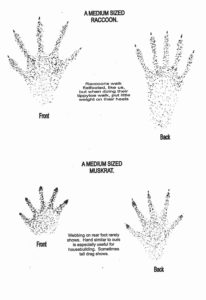
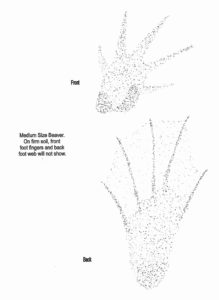
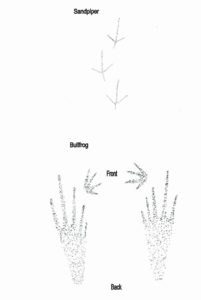
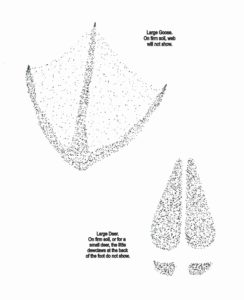
You can also start a track collection by casting good tracks in Plaster of Paris. Frame the track in a little raised collar cut from a plastic bottle or taped together from a strip cut from a file folder. Pour in a thin batter of Plaster of Paris. Let it set at least an hour, dig out carefully, and brush clean gently. A more durable cast can be made from Water Putty, which takes about a half a day to harden. An advantage of casts is that they are shaped like the animal’s foot rather than the mirror imprint in the soil. Doing some practice casting at home before venturing out is probably a good idea.
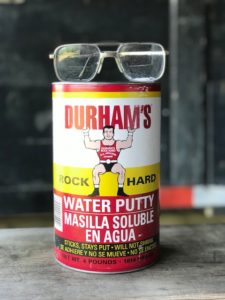
Can of Water Putty, my glasses for scale.
If you have critters in your neighborhood, you can make a muddy spot in which they can leave their footprints. You could put out bait, but first decide whether you really want the critters viewing your yard as a snack bar.
All of Bur Oak Land Trust properties have wildlife, which is one reason for their protection – and are open to the public. Check out the property links at www.buroaklandtrust.org for more information. They are a great place to start your search for animal tracks. Enjoy your summer!


